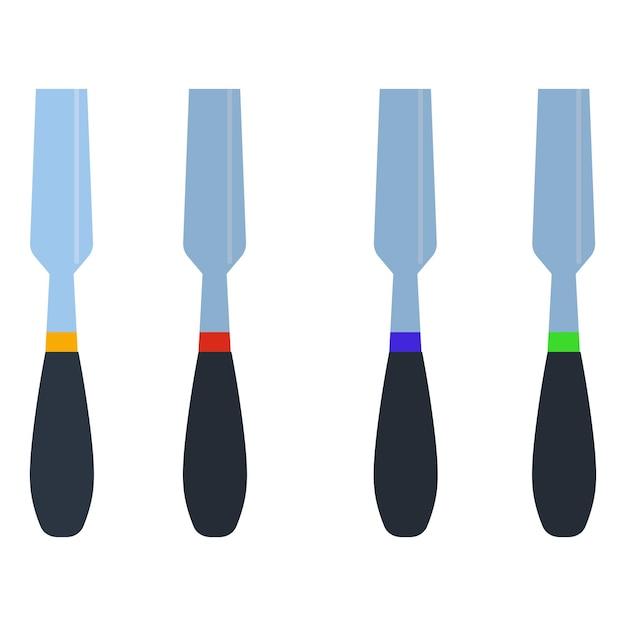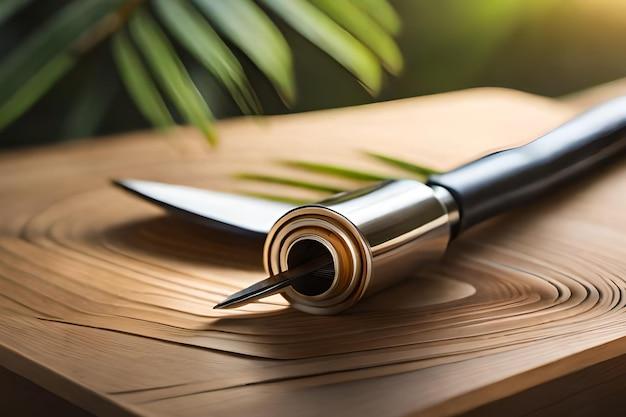Ceramics is a fascinating art form that allows artists to mold and shape clay into beautiful creations. But have you ever wondered what it means to “score” in ceramics? In this blog post, we will explore the concept of scoring in detail and understand its importance in the ceramic-making process. From the difference between clay and ceramics to the significance of scoring and slipping, we will cover it all. So, if you are a budding ceramic artist or simply curious about the world of clay, keep reading to unravel the mysteries of scoring in ceramics.
[continue reading…]
What Does Scoring Mean In Ceramics
As you delve into the wonderful world of ceramics, you may stumble upon the term “scoring” and wonder, “What on earth does that mean?” Well, fear not, my fellow clay enthusiasts, for I am here to shed some light on this perplexing question!
The Art of Scoring
Scoring in ceramics is like the secret handshake of the clay world. It’s a technique that involves making shallow cuts or marks on the surface of the clay before joining two pieces together. Think of it as a form of “roughing up” the clay to create a better bond between the pieces.
Why Score, You Ask
Ah, the great cosmic question of why… In the case of ceramics, scoring serves several important purposes. Firstly, it provides more surface area for the clay pieces to connect, creating a stronger bond. It also allows air to escape during the joining process, preventing pesky air bubbles from ruining your masterpiece. Plus, it gives the clay a bit of texture, making it easier for the joining slip or clay to adhere.
How to Score Like a Pro
Now that we know why scoring is a crucial step in the ceramics game, let’s dive into the nitty-gritty of how to nail this technique. Grab yourself a scoring tool (or a fork if you’re feeling wild) and follow these simple steps:
-
Prepare Your Clay – Get your clay pieces ready for joining. Make sure they are at the right consistency, neither too dry nor too wet, for optimal bonding.
-
Score, Score, Score! – Take your scoring tool and gently make shallow cuts or marks on the surfaces that will come into contact. Be sure to create a crisscross pattern, resembling a tic-tac-toe board, to maximize the bonding potential.
-
Rub-a-Dub-Dub – Once you’ve scored to your heart’s content, it’s time for the next step: slipping and sliding. Apply the joining slip or wet clay to the scored surfaces and gently press the pieces together. Give them a little wiggle to help the clay molecules find their new best friends.
Tips and Tricks for Scoring Success
Now that you’re armed with the knowledge of the art of scoring, let me share with you a few expert tips and tricks to ensure your scoring endeavors hit the bullseye:
-
Be Gentle – While scoring, remember that we’re not trying to win a sword fight against the clay. Gentle pressure is all you need to create those beautiful marks.
-
Consistency is Key – Make sure the clay you use for scoring and joining has a similar moisture content. Mismatched consistencies can lead to a weak bond or even breakage.
-
Patience, Young Grasshopper – Allow the joined pieces to rest for some time, giving them an opportunity to dry and settle before moving on to the next step in your ceramic adventure.
Scoring: The Unsung Hero of Ceramics
In conclusion, my fellow clay comrades, scoring is the unsung hero of the ceramics world. It may not get the spotlight it deserves, but without it, our beloved clay creations would crumble into a pile of sadness. So, the next time you embark on a pottery project, remember to give a nod of gratitude to the glorious technique known as scoring.
FAQ: What Does Scoring Mean in Ceramics
In the world of ceramics, there are certain techniques and terms that may be unfamiliar to beginners. One such term is “scoring.” Scoring plays a crucial role in the construction of ceramic pieces, ensuring their durability and structural integrity. In this comprehensive FAQ-style guide, we will answer some of the most frequently asked questions about scoring in ceramics. So, let’s dive in!
What is the Difference Between Clay and Ceramics
- Clay refers to a fine-grained natural rock or soil that is malleable when moist and becomes hard when heated. Ceramics, on the other hand, are objects made from clay that have been shaped and fired to a hardened state.
Why is it Important for Clay to Dry Out Completely Before it is Fired
- Before firing, clay must be dried out completely to remove any remaining moisture. This is important because if the clay contains moisture when it is heated, it can cause the piece to crack or even explode in the kiln.
What Does it Mean to Score and Slip
- Scoring and slipping is a technique used to join two pieces of clay together. Scoring involves scratching the surface of the clay, creating texture and providing more surface area for the slip (clay mixed with water) to adhere to. Slipping is the act of applying the clay-water mixture to the scored area before attaching the two pieces.
Why is it Important to Score and Slip Clay
- Scoring and slipping clay is crucial because it creates a strong bond between the clay pieces, preventing them from separating during the firing process. Without scoring and slipping, the clay pieces may break apart or become misaligned.
How Does Vinegar Affect Clay
- Vinegar, a weak acid, can be used in ceramics to remove excess sodium or potassium ions from the clay. It can help improve the workability of clay and reduce the risk of cracking during drying and firing.
What’s the Meaning of Scoring
- In ceramics, scoring refers to the process of making shallow cuts or scratches into the surface of the clay. These scores create channels for the slip to flow into, enhancing the connection between clay pieces and ensuring a strong bond.
What are the 4 Stages of Clay
- Slip Stage: Clay in its most liquid form, resembling a thick milkshake.
- Plastic Stage: The clay is soft and flexible, easy to mold and manipulate.
- Leather-hard Stage: The clay has lost a significant amount of moisture and has hardened to a point where it can be carved or trimmed.
- Bone-dry Stage: The clay is completely dry and ready for firing. It is very fragile in this state.
What are the 6 Stages of Clay
- Slip Stage
- Plastic Stage
- Leather-hard Stage
- Bone-dry Stage
- Bisqueware Stage: Clay that has been fired once but not yet glazed.
- Glazeware Stage: Clay that has been fired and glazed, ready for its final firing.
What are the 5 Stages of Clay
- Slip Stage
- Plastic Stage
- Leather-hard Stage
- Greenware Stage: Clay that has dried out completely and is ready for its first firing.
- Finished Stage: Clay that has been fired, glazed, and finished, ready for use or display.
What Tool Can You Use to Smooth the Clay
- To smooth clay surfaces, you can use various tools such as a rib, sponge, or even your fingertips. These tools help refine the surface and create a polished finish.
Why Do We Score and Slip
- Scoring and slipping ensure that joined clay pieces remain securely attached during the different stages of clay’s formation and firing process. It prevents the disintegration of the piece and adds strength to the overall structure.
What are Scoring Tools
- Scoring tools are instruments used to make shallow cuts or scratches in the clay’s surface. These tools include needle tools, scoring knives, or even the humble fork. These scores provide the necessary texture for slip to adhere to and create a strong bond.
How Do You Attach Wet Clay to Bone Dry Clay
- Attaching wet clay to bone dry clay requires scoring and slipping. By scoring the bone dry clay and applying slip to the scored area, you create an adhesive surface to which the wet clay can be attached. Pressure and blending further aid in the bond between the two clay pieces.
Can You Apply Slip to Bone Dry Clay
- While slip is most commonly used between two wet pieces of clay, it can still be applied to bone dry clay. However, it is essential to score the bone dry clay first to ensure a successful bond.
What Do You Score Clay With
- Various tools can be used for scoring clay, including needle tools, scoring knives, or even a serrated rib. These tools create shallow cuts or scratches on the clay’s surface, allowing the slip to adhere effectively.
What Can I Use Instead of a Scoring Tool
- In a pinch, if you don’t have a specific scoring tool, you can use alternatives such as a fork or the pointed end of a paintbrush. The goal is to create texture on the clay’s surface to enhance the bond.
What is Slip in Clay Work
- Slip is a mixture of clay and water that has a creamy consistency. It is often used in ceramics to adhere clay pieces together or to decorate the surface. Slip can be colored with pigments or left natural, depending on the desired effect.
What is a Wallpaper Scoring Tool
- A wallpaper scoring tool, though not originally intended for ceramics, can be repurposed to create scores on the clay’s surface. Its serrated wheel can make shallow cuts that provide texture and enhance the bond when applying slip.
What is the Value of 1 Score
- In ceramic scoring terminology, “1 score” refers to a single shallow cut or scratch made on the clay’s surface. Multiple scores are typically required to create an effective bond between clay pieces.
What Does Vinegar Do to Clay
- Vinegar, when used in ceramics, acts as a weak acid that helps improve the workability of clay. It can remove excess sodium or potassium ions from the clay, reducing the risk of cracking during drying and firing.
What are Scoring Models
- Scoring models are templates or guides used to create consistent scores on clay surfaces. These models can be made from various materials, such as cardboard or plastic, and help ensure even spacing and depth of scores.
By understanding the process and significance of scoring in ceramics, you can elevate your clay construction skills to new heights. Scoring and slipping not only create a sturdy connection between clay pieces but also allow for endless creative possibilities. So go ahead, grab your scoring tool, and delve into the world of ceramics with confidence!
*Please note that the information provided in this article is for educational purposes only and does not substitute professional advice.

